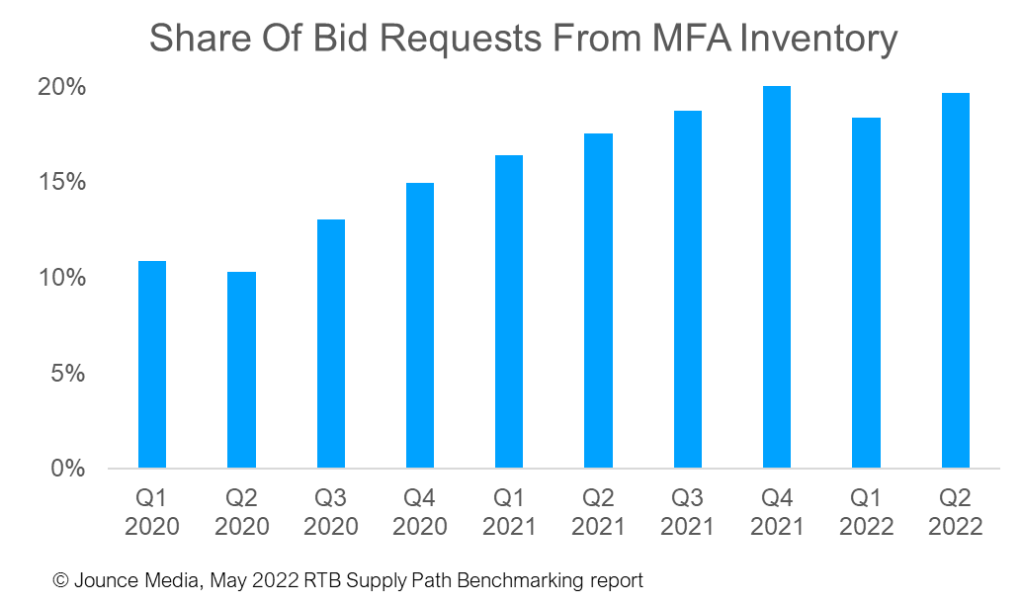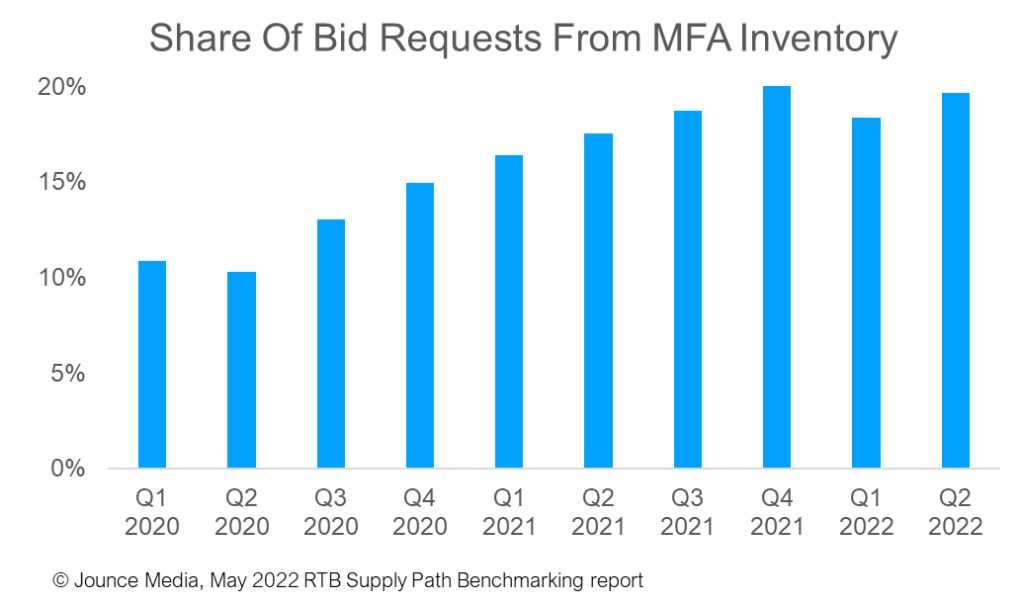Caught between resignation and resistance, ad industry grapples with the prevalence of ‘made-for-advertising’ sites

By Seb Joseph
A recent study from Ebiquity found that advertisers are spending roughly a tenth of their budgets on clickbait sites. Nothing new there. Time and again reports spotlight how often ad dollars end up anywhere but premium sites. The real surprise is that there seems to be a growing resignation that these clickbait sites are going to siphon even more money away from respected publishers.
The study, as Marketing Brew reported, found that advertisers spent an eye-bulging $115 million between January 2020 and May 2022 on something ad execs call “made-for-advertising” (MFA) inventory — sites that exist for the sole purpose of aggressively monetizing traffic so they don’t have to worry about the cost of acquiring it in the first place. In other words, these sites are in the business of ad arbitrage.
And business is booming — at least it is if that study from media management firm Ebiquity, programmatic consultancy Jounce Media and brand suitability business DeepSee is to be believed.
“This isn’t surprising to hear but it continues to be disappointing because it highlights the continued lack of transparency in the media supply chain,” said Joshua Lowcock, chief digital and global brand safety officer at UM, told Digiday. “I’ve had clients read the [MFA] report and then reach out to me to see whether they have the right controls in place to limit their exposure.”
The aforementioned study found that $115 million accounts for around 7.8% of the $1.47 billion that 42 clients of Ebiquity spent on programmatic display and video ads across 5,490 unique MFA domains. That’s money that could’ve gone to quality publishers. In the U.S., Ebiquity’s clients spent roughly one in every 10 dollars (9.8%) on average on clickbait. Perhaps more worryingly, though, this seems to be a problem that’s getting worse, not better. In Q1 2020, MFA inventory was 10% of the bidstream. Now it’s 20%, per Jounce Media, which has been following the flow of media dollars to these sites since 2020.
Cue the obligatory reactions of shock and denial that are becoming par for the course whenever reports like this are published. Undercutting it all, though, is a pang of resignation. Or to put it more bluntly, ad execs are adopting an if-you-can’t-beat them, join-them strategy.
Ad tech vendors that once steered clear of selling MFA inventory are now folding them into their own marketplaces. For example, native advertising ad tech vendor AdYouLike launched a new integration with Exorigos, a MFA publisher, in April. Even premium publishers seem just as cynical about the issue these days. Group Nine has outsourced monetization to MFA specialists to satisfy the ad arbitrage demand opportunity.
Of course, these companies would rather be rewarded for producing quality content that attracts readers. But doing so doesn’t always guarantee top-line growth in a market wired to reward cheap reach. MFA partnerships can help plug that gap. Not that the MFA sites themselves need partnerships necessarily. They seem to be doing fine on their own, especially as they get …read more
Source:: Digiday





